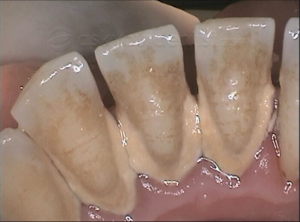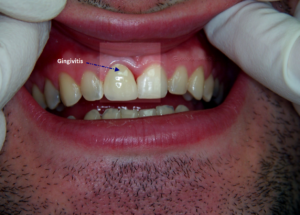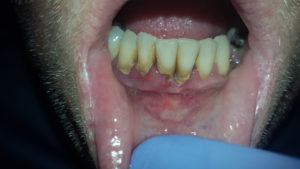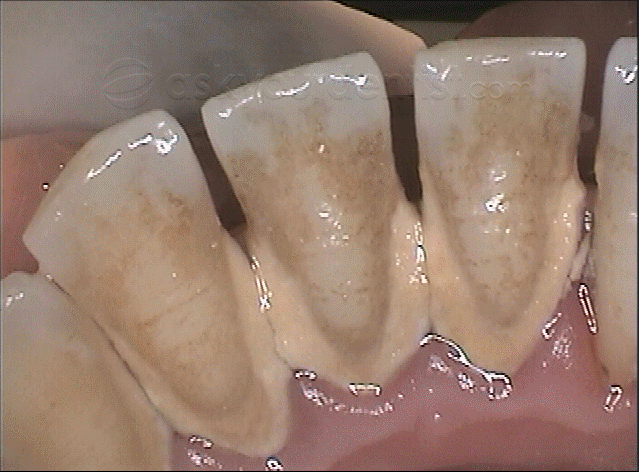
Teeth tartar, also known as dental calculus is a cement-like deposit that builds up on the surface of the tooth.
Where do I most likely find tartar in my mouth?
It usually starts building up along the gum-line on the inside of the lower front teeth and the first and second upper molars. These surfaces will build the tartar first because they are in close contact with the ducts of the salivary glands in the mouth, the cheek salivary glands (parotid glands) and the salivary glands located under the tongue (sublingual glands). But tartar can also be found anywhere in the mouth in connection to a teeth surface.
Tartar can build up both above the gum and underneath it.
What is tartar made of?
Tartar is made of proteins from your saliva, mouth bacteria and some elements and by-products from the food you eat.
How quickly does tartar build up?
How quickly tartar builds up varies from one individual to another depending on the variations of the three factors mentioned above that contribute to the making of the tartar.
A small percentage of the population build tartar quicker than others and therefore need more professional help. Some patients need to see the hygienist/therapist once every 3 months to make sure the tartar and plaque are removed before they cause permanent damage to the tooth attachment.
Dental tartar is not easy to remove from the surface of the tooth with a tooth brush and patients need professional help from a dentist, hygienist or a therapist to clean the tartar away.
How does tartar develop?
Tartar starts as soft plaque. Plaque is a layer of bacteria that attaches to the tooth surface and if not removed it will get thicker and stickier. Plaque, in combination with minerals from saliva becomes the hard tartar or dental calculus.
Leaving the tartar in place will irritate the gums causing redness of the gum, swelling and bleeding. This is known as Gingivitis.

Gingivitis is a reversible condition. If the tartar is cleaned away from the surface of the tooth using a toothbrush, the gum returns to its original state of being firm, pink with minimal bleeding.
If tartar is not removed and left to build up, it will cause permanent damage to the gum tissue around the teeth. This condition is called periodontitis and is characterised by bone and gum loss around the affected tooth. This damage is irreversible.

It is important to see your dentist for regular check-ups for best advice on how to keep your teeth and gums healthy.

